This is the sixth part of a multi-part series.
The Instant Graphics and Sound format reached its zenith in September 1991 when artist Steve Turnbull published two psychedelic animations on a messageboard on the CrossNet network for Atari ST bulletin boards. Both were built around large triangles: a pyramid in one, a volcano in the other.
The pyramid piece, named XNET_LST.IG, is a trippy tour-de-force — the most amazing IGS animation ever created, in my opinion. It showcases every trick Turnbull had learned over the last two years.
On a surface level, it’s essentially a lengthy animated slideshow, where each CrossNet member BBS is highlighted individually with clever visuals, sounds effects, and animations connected thematically to the board’s name.
But the framing! A large red moiré pyramid with a single eye in its capstone. Egyptian iconography everywhere, including a cartouche with a prominent scarab symbol in the upper left and a large crook and flail in the upper right.
“XNET_LST.IG” is a vibrant visual slideshow of “calling cards” for Atari ST bulletin board systems that were part of the CrossNet national message network.
And then the denouement. The frames and symbols are all wiped away, leaving only the eye, the pyramid, and the blue background. As Beethoven’s “Für Elise” begins to play, a quotation appears: “… and His Majesty went forth in a chariot of Electrum and spoke… ‘Osiris, Ruler of Eternity, Give me Light that I may see Thy Beauty!’”
The yellow color register transitions to white, and then screen begins to flash. Circles emanate from the eye with overlapping high-pitched sound effects. Suddenly, the sounds stop, the pupil of the eye wiggles, and beams of light stream out in all directions. The image desaturates, then fades away.
Turnbull must have spent an enormous amount of time making XNET_LST.IG, sweating every detail. In contrast, VOLCANO.IG probably was developed more hastily. It feels a bit sloppier, yet more mind-bending.
It begins with the volcano being drawn on top of a star field. Text appears pleading for fellow “Instant Graphics! Funsters!” to share their own IGS art. Then things get bizarre.
“VOLCANO.IG” is another psychedelic IGS animation created by Steve Turnbull in fall 1991.
The text is wiped away and a crude 3D-like face is drawn on top of the volcano. The eyes begin to pulse hypnotically, then the entire face and volcano change colors. Arcs radiate outward from the forehead, and then the top of the head and triangle are stretched vertically like silly putty. Finally, there’s a climactic explosion of red and yellow arrows and lines from the top, like a volcanic eruption. Turnbull’s handle, “Mr. Rodgers,” is superimposed in blue text with a drop shadow, and then the entire image slowly scrolls off the screen.
In addition to using the same foundational shape — a large triangle — these pieces also shared the same four-color palette: red, blue, yellow, and black. Most IGS art was created for the Atari ST’s medium resolution, the preferred mode for BBSing since it allowed 80 columns of text. But it was limited to just four color registers. In his earliest pieces, Turnbull used the ST’s ugly default palette, but by late 1991 he had found that red, blue, yellow, and black were more flexible. He could “blend” colors with shaded fills, simulating purples or oranges, a technique he demonstrated in this short color mixing tutorial:
“COLORS.IG” shows how Turnbull could make four colors into eight.
XNET_LST.IG and VOLCANO.IG, together with Turnbull’s visually impressive “Crapz!” door game released soon afterward (and discussed in Part 5), represent an artistic pinnacle for IGS. They are a testament to the creative possibilities of IGS.
But they also scream “What if?”
What if more people had answered Turnbull’s call and made more IGS art? What if the Atari ST platform hadn’t nose-dived? What if an online service had adopted or adapted IGS as a standard?
Perhaps IGS could have had a more robust legacy.
But time was rapidly running out on this format and its community. More and more Atarians were willing to hold their noses and turn to the dark side.
“As it became clear that the less-worthy PC would probably dominate the future, the Atari programming community began leaving for greener pastures,” Turnbull wrote in a later retrospective. “Atari BBS network traffic dried up as sysops dropped away in increasing numbers. Everyone was vanishing.”
Like most Atari fans, Steve Turnbull did not like PCs. He channeled his disdain into a short joke animation, titled “HELL.IG”. This file was preserved by Tom D’Ambrosio.
Do you enjoy my retrocomputing stories on Break Into Chat? Please join my email list and stay in touch. 📬
‘THE TIME HAS COME’
At its peak in 1987, Atari had sold 400,000 STs, according to sales data compiled by Jeremy Reimer. But annual sales kept dipping. (They ultimately plummeted to 30,000 in 1993, the final year Atari sold computers)
Sales of IBM PC compatibles, on the other hand, had always dwarfed the Atari ST. Six million were sold in 1987, and six years later, sales had more than quadrupled to 28 million.
Larry Mears, creator of “Instant Graphics and Sound,” could read the writing on the wall.
He had little to show for the years he had spent as a hobbyist software developer for the Atari ST. By September 1990, only 17 users had sent him money to support the development of Instant Graphics and Sound — maybe $250 total, if each had sent in the suggested $15. A dramatic reversal of fortune seemed unlikely.
That’s why, earlier that year, Mears had begun to consider porting IGS to the PC platform.
When Mears first ran the idea past one of his biggest boosters, Ben van Bokkem, sysop of the UK-based “InterNet BBS,” van Bokkem remained bullish on opportunities to monetize IGS.
“It seems to be really taking off,” van Bokkem wrote in an email reply. “It won’t be long before it will be spread around the world. I’ve also had enquiries from Spain, Holland and Denmark!”
But, he hedged, “when it goes over to the PC that’s when you’ll start making some REAL money!”
Mears came to agree with this assessment, and one year later, he made a big announcement.
In the July 26, 1991, issue of “ST Report” online magazine, Mears told his fellow Atarians he had been developing “Blue Instant Graphics!” (BIG), a new graphics protocol for DOS/PC users that would be “about 90% compatible with its ST ancestor.” He planned to begin selling a BIG terminal program for $25 by Christmastime.

Though Mears kept an eye on the Atari IGS scene, now he was focused on finishing BIG and promoting it to the PC world. By November 1991, he was running a new support board — “BIG City BBS” — and calling himself “BIG Bopper.”
Mears’ final IGS release for the Atari ST, v2.17, came in January 1992. A few months later, he released the source code publicly.
“The time has come to make this available,” Mears wrote.
Mears had effectively said goodbye to IGS, but the community didn’t disappear overnight. Anthony Rau released a revamped edition of his IGS Editor in 1993. And some folks, like Tom D’Ambrosio, kept making art a while longer.
‘VIOLENT TECHNOLOGICAL DEVELOPMENT’
In developing BIG for the PC, Mears drew on all the lessons he had learned over years of developing and supporting graphics protocols on the Atari ST.
From day one, he offered a complete package of BIG software: a full-fledged BIG terminal, along with a paint program and an offline viewer. He gave away the two utilities for free, but sold the terminal as shareware. Users could pay a $25 to unlock four “advanced” features of the terminal: bit-blitting (animation), changing the color palette, Adlib sound card support, and extra sound effects.
This video shows the short animated startup sequence for BIG Terminal v1.03, then shows a user displaying several .BIG files on the Guardian of Forever BBS.
And Mears obtained some third-party help to get the protocol off the ground. He persuaded Don Mankin to add support for Blue Instant Graphics to his MEGAHOST BBS software; while back in the Atari community, Andrew Studer added both IGS and BIG support to his ST-KEEP BBS software.
Mears also got cartoonist Don Lokke to create artwork in BIG format. Lokke was the prolific purveyor of several ANSI “telecomic strips,” with titles like “Mack the Mouse,” “Reggie the Rattler,” “Talking Heads,” and “Yellow Bird.” He sold weekly installments to BBS sysops around the country. BIG gave Lokke a chance to draw digital art in much greater detail than ANSI afforded.
Lokke produced several pieces in early 1992, including an animated version of his “Reggie the Rattler” strip, plus a stylish animated tutorial with BIG drawing tips, similar to the ones Steve Turnbull had created for IGS. Mears included these in his releases, as examples of what was possible using the BIG format.
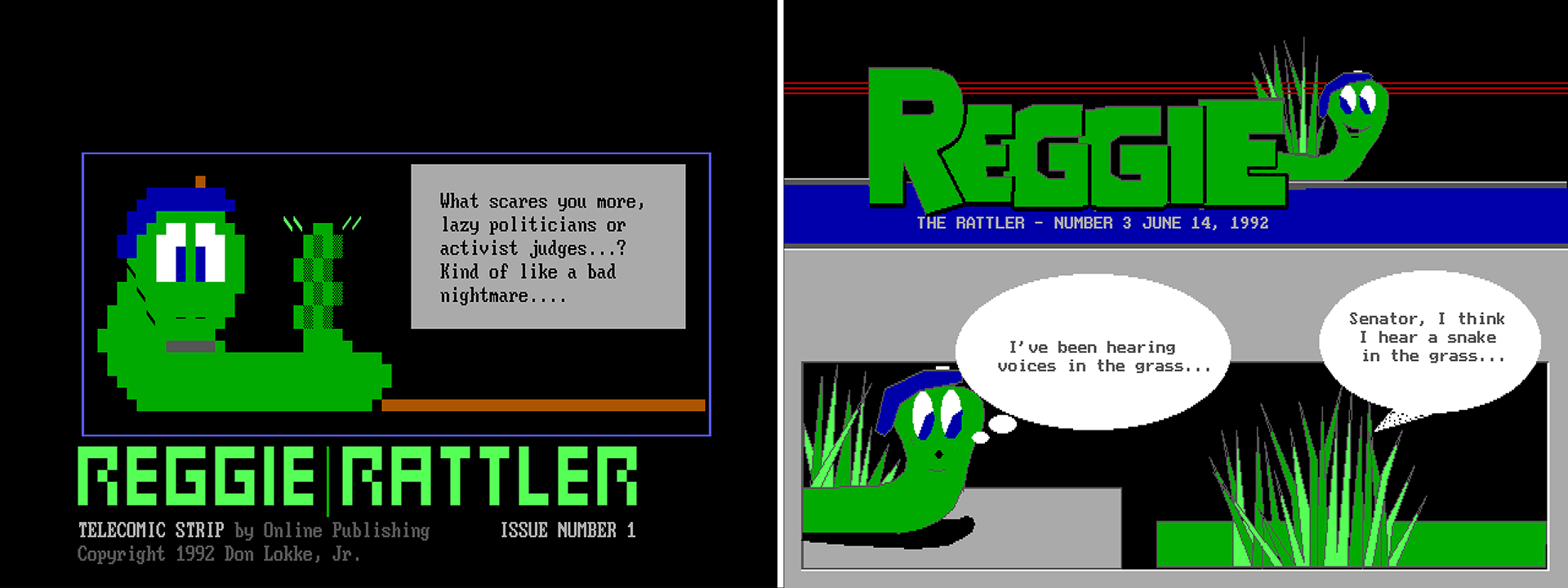
It was a good start. But Mears faced stiff competition in the race to establish a standard for displaying graphics on BBSes.
An extremely impressive system called GETS had debuted before BIG in 1991. Meanwhile, some developers were adopting the old NAPLPS graphics language, best known for its use in teletext and on the Prodigy online service. Still others were producing BBS software that was entirely graphical, such as RoboBoard and FirstClass.
But the real blow was the arrival of the Remote Imaging Protocol (RIP) in September 1992, which became the dominant graphics format for PC BBSes.
The creators of RIP ackowledged in their documentation that their protocol’s design built on “earlier graphical script languages,” mentioning Skypix and AVATAR specifically.
Were they familiar with Mears’ work on IGS or BIG? It’s hard to know for sure, but one scrap of evidence hints it was possible.
In late 1991, Mears posted on a national Atari IGS support forum about a recent visitor to his BIG City BBS who had downloaded the BIG terminal software. The caller told Mears he had heard about BIG on the RIME network and described himself as “a member of a group that was developing a ‘GRAPHICS BBS’ software.”
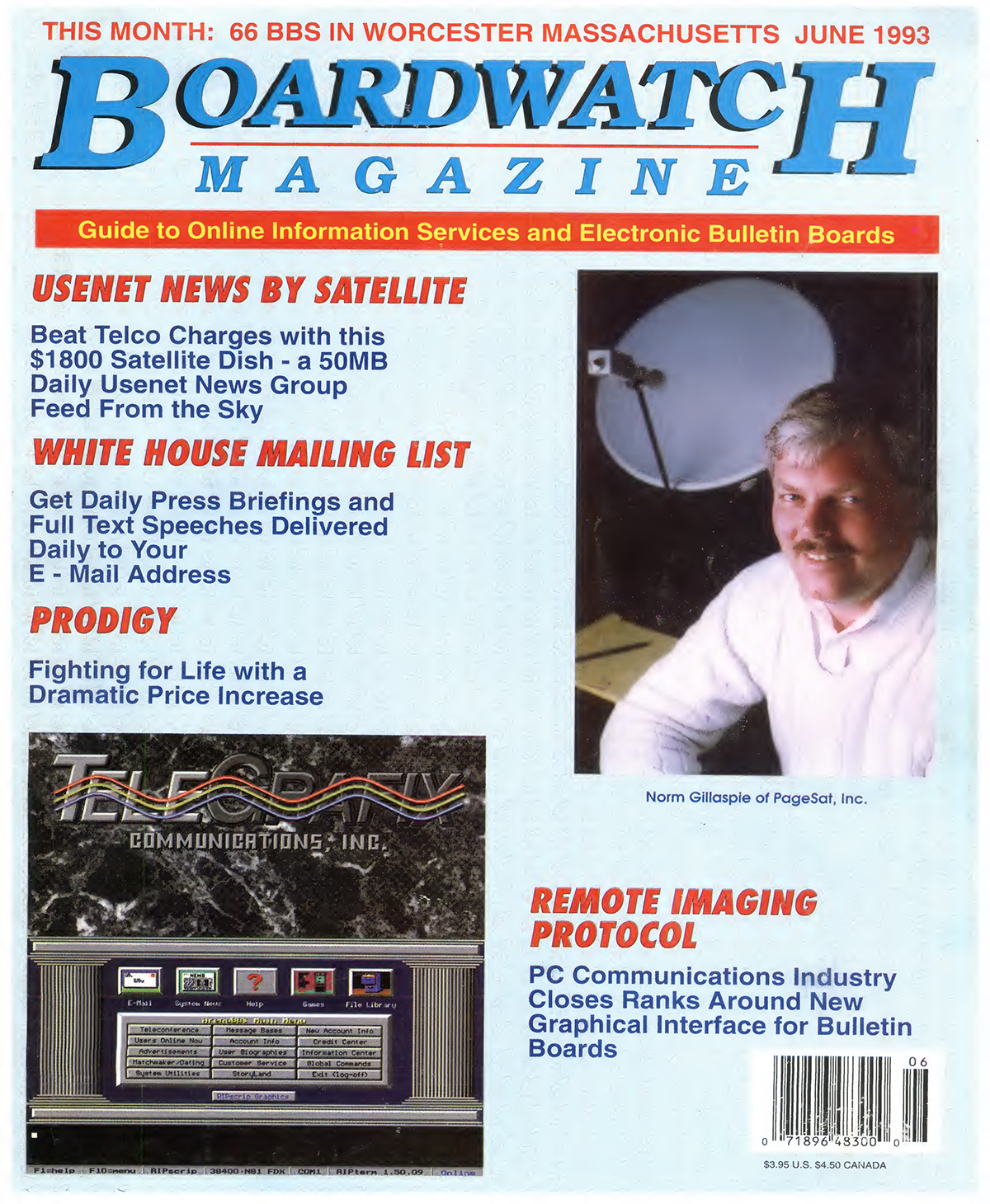
RIP was released 10 months later, followed by many other similar systems, such as Excalibur and VGIX.
“The year 1993 will likely be viewed as an extremely exciting time of almost violent technological development in the BBS community,” wrote Jack Rickard in BoardWatch in June, in an in-depth article comparing the RIP and NAPLPS graphics formats.
RIP was developed by longtime sysops Jeff Reeder and Jim Bergman, along with Mark Hayton. They were well known in the PC BBS community, and within six months of RIP’s release, they had forged partnerships with many of the biggest telecom players, including Galacticomm, makers of The Major BBS software, and deltaComm, makers of the Telix terminal program. That summer, RIP was the hot topic at ONE BBSCON, with at least 10 sessions scheduled to include some discussion of RIP.
Meanwhile, Mears remained an outsider — a small fish in a big pond. His efforts with BIG had been eclipsed.
SUBCULTURES WITHIN SUBCULTURES
It would be easy to end this series the same way I began, by contrasting IGS with RIP.
Certainly, RIP outclassed IGS in ways. It was higher-resolution, and could display bitmap images stored on a user’s machine. Later versions could transmit image sound files as binary data. On the other hand, RIPscrip never gained a key feature of IGS: the ability to loop commands, which could make smoother animation.
And, yes, you could paint these formats as David and Goliath, with RIP usage surpassing IGS by far.
Because RIP was adopted by artists from the ANSI artscene, it has a small legacy today. You can find thousands of examples of RIP art in the 16colors archive, for example. In contrast, fewer than 100 IGS pieces have survived, and only a handful of people remember it.
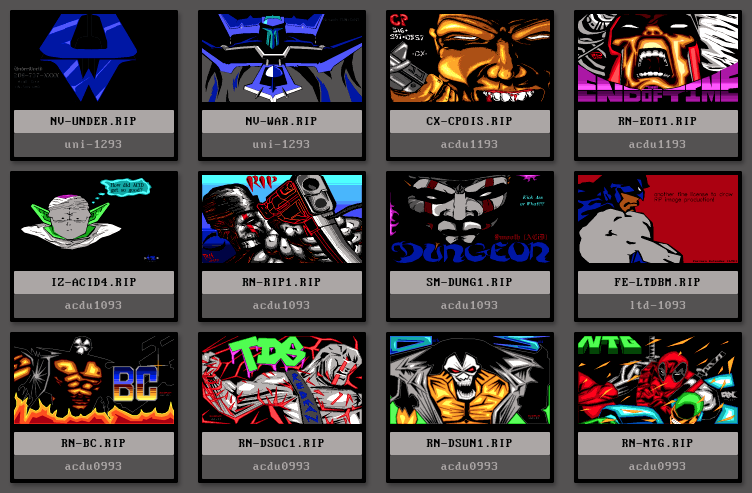
But ultimately IGS and RIP were more similar than different. Both aimed to make graphical user interfaces possible on BBSes. They had mostly the same capabilities. And they shared the same fate: obsolescence.
When you zoom out, IGS, RIP, and the rest of the chaotic world of BBS graphics formats from 1988 to 1995 begin to look equally small. Subcultures within subcultures.
Only 15% of American households owned a computer in 1990, according to the U.S. Census Bureau, when IGS was hitting its stride. (That figure reached 35% by 1997)
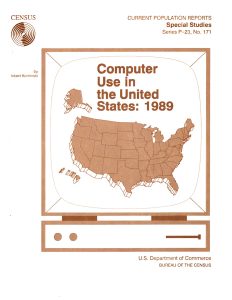
Calling bulletin boards wasn’t widespread among those folks. The Census Bureau’s Current Population Survey found just 23% of adults’ home computer systems in 1989 included modems. Four years later, that figure had risen only to 35%.
And finally, most BBSes never offered graphics in any of these formats. Take the St. Louis BBS scene as a microcosm. In June 1994, almost two years after RIP’s debut, only 32 out of 356 total boards there — just 9% — had graphics support, according to a monthly BBS list compiled by Beth Lunceford, better known as “Fire Escape.”
IGS. RIP. SkyPix. NAPLPS. Tel-FX. GETS. VGIX. Excalibur. AVATAR. There were too many competing BBS graphics standards.
These and all the others suffered from the same problems: They were too difficult, or expensive, for most sysops to use to customize their boards; and the labor provided little payoff, since so few callers used the special front-end clients required to view the graphics.
So none of these protocols reached critical mass, though RIP came the closest.
By the mid-1990s it was too late. People who wanted fancy graphics weren’t seeking them on BBSes — they were installing web browsers and paying for internet access.
CODA
When BIG didn’t catch on, Mears tried again. He created a new lower-level piece of PC software called CONDOR. As a replacement for the ANSI.SYS driver, it could bring vector graphics to existing PC terminal programs.
He kept updating CONDOR until 1995. By then, the entire BBSing world was in free-fall as people abandoned bulletin boards for the World Wide Web.
“I became discouraged,” Mears wrote later. “For many years I just surfed.”
Over the next four years, Mears watched Macromedia Flash proliferate as a way to make interactive websites and online games with vector graphics. But Macromedia’s software for creating Flash content was expensive.
So, in 1999, Mears dusted off his IGS/BIG protocols and tried adapting them for the web. The result was a new Java-based tool called VectaSketch for embedding 2D graphics on a webpage. As with IGS, BIG, and CONDOR, VectaSketch code was plain text and could be written by hand. But Mears knew few people would do that, so he also created a drawing tool called SketchPad.
Of course, VectaSketch didn’t light the world on fire. But it was one last hurrah for the techniques Mears had been playing with since 1986.
… Except it wasn’t quite the last.
Coming next: Part 7, Revival
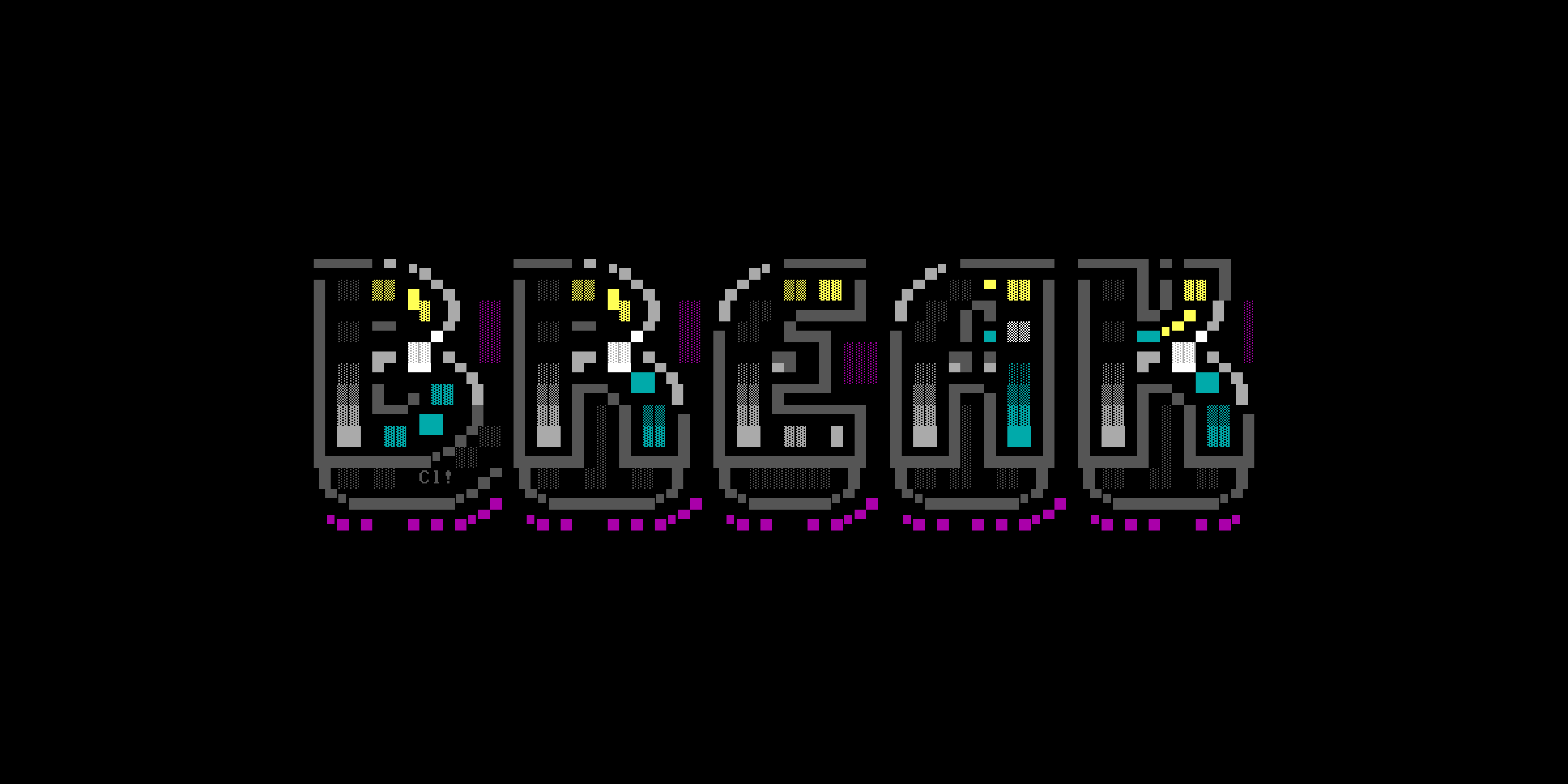
Share your thoughts!